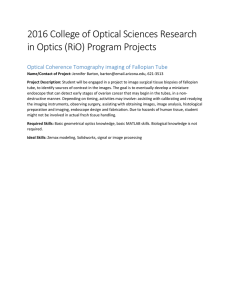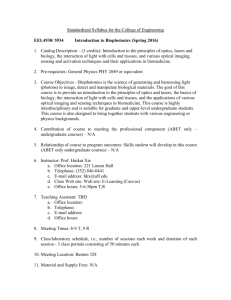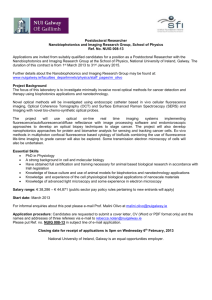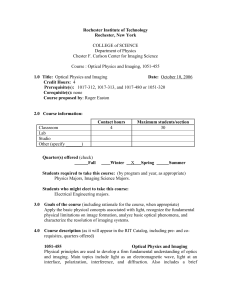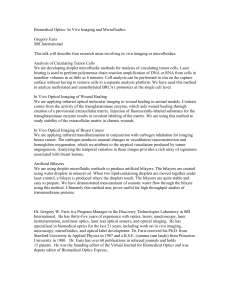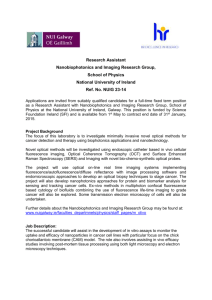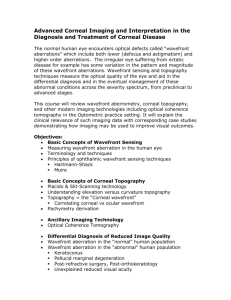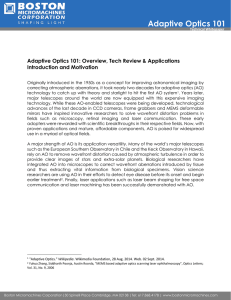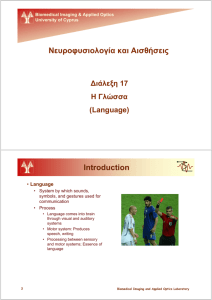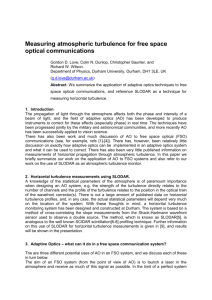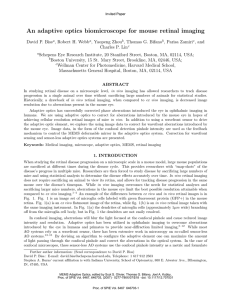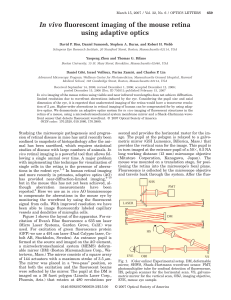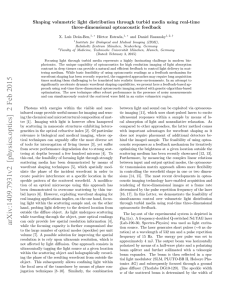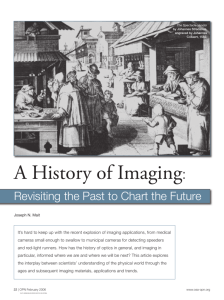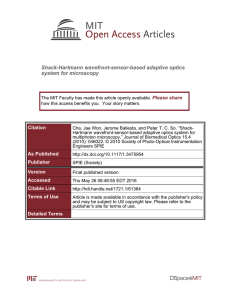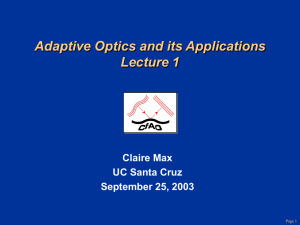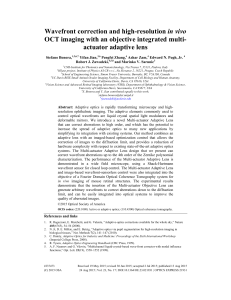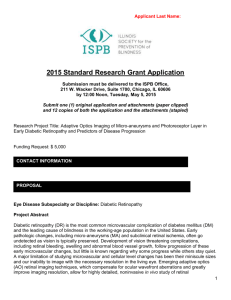sps-april-19th-2012-abstract1 - University of California, Santa Cruz
advertisement
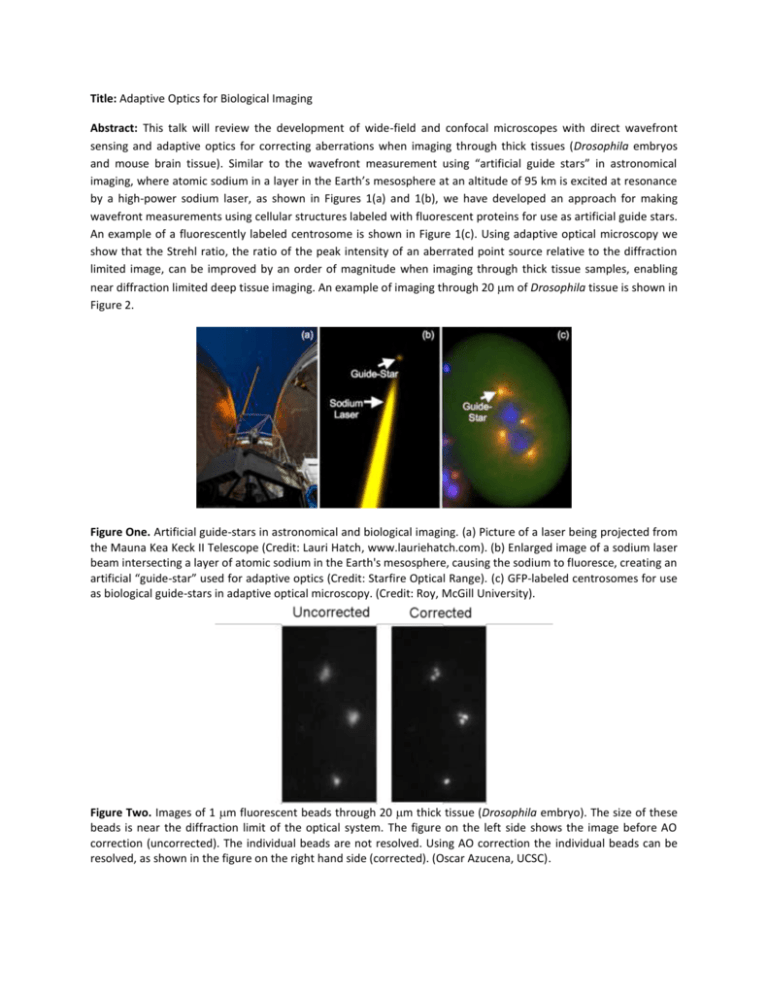
Title: Adaptive Optics for Biological Imaging Abstract: This talk will review the development of wide-field and confocal microscopes with direct wavefront sensing and adaptive optics for correcting aberrations when imaging through thick tissues (Drosophila embryos and mouse brain tissue). Similar to the wavefront measurement using “artificial guide stars” in astronomical imaging, where atomic sodium in a layer in the Earth’s mesosphere at an altitude of 95 km is excited at resonance by a high-power sodium laser, as shown in Figures 1(a) and 1(b), we have developed an approach for making wavefront measurements using cellular structures labeled with fluorescent proteins for use as artificial guide stars. An example of a fluorescently labeled centrosome is shown in Figure 1(c). Using adaptive optical microscopy we show that the Strehl ratio, the ratio of the peak intensity of an aberrated point source relative to the diffraction limited image, can be improved by an order of magnitude when imaging through thick tissue samples, enabling near diffraction limited deep tissue imaging. An example of imaging through 20 m of Drosophila tissue is shown in Figure 2. Figure One. Artificial guide-stars in astronomical and biological imaging. (a) Picture of a laser being projected from the Mauna Kea Keck II Telescope (Credit: Lauri Hatch, www.lauriehatch.com). (b) Enlarged image of a sodium laser beam intersecting a layer of atomic sodium in the Earth's mesosphere, causing the sodium to fluoresce, creating an artificial “guide-star” used for adaptive optics (Credit: Starfire Optical Range). (c) GFP-labeled centrosomes for use as biological guide-stars in adaptive optical microscopy. (Credit: Roy, McGill University). Figure Two. Images of 1 m fluorescent beads through 20 m thick tissue (Drosophila embryo). The size of these beads is near the diffraction limit of the optical system. The figure on the left side shows the image before AO correction (uncorrected). The individual beads are not resolved. Using AO correction the individual beads can be resolved, as shown in the figure on the right hand side (corrected). (Oscar Azucena, UCSC). Bio: Joel Kubby is an Associate Professor of Electrical Engineering in the Baskin School of Engineering at the University of California at Santa Cruz. His research is in the area of Micro-Electro-Mechanical Systems (MEMS) with applications in Optics, Fluidics and Bio-MEMS. Prior to joining University of California Santa Cruz in 2005, he was an Area Manager with the Wilson Center for Research and Technology and a Member of Technical Staff in the Webster Research Center in Rochester New York (1987-2005). Prior to Xerox he was at the Bell Telephone Laboratories in Murray Hill New Jersey working in the area of Scanning Tunneling Microscopy (STM).
